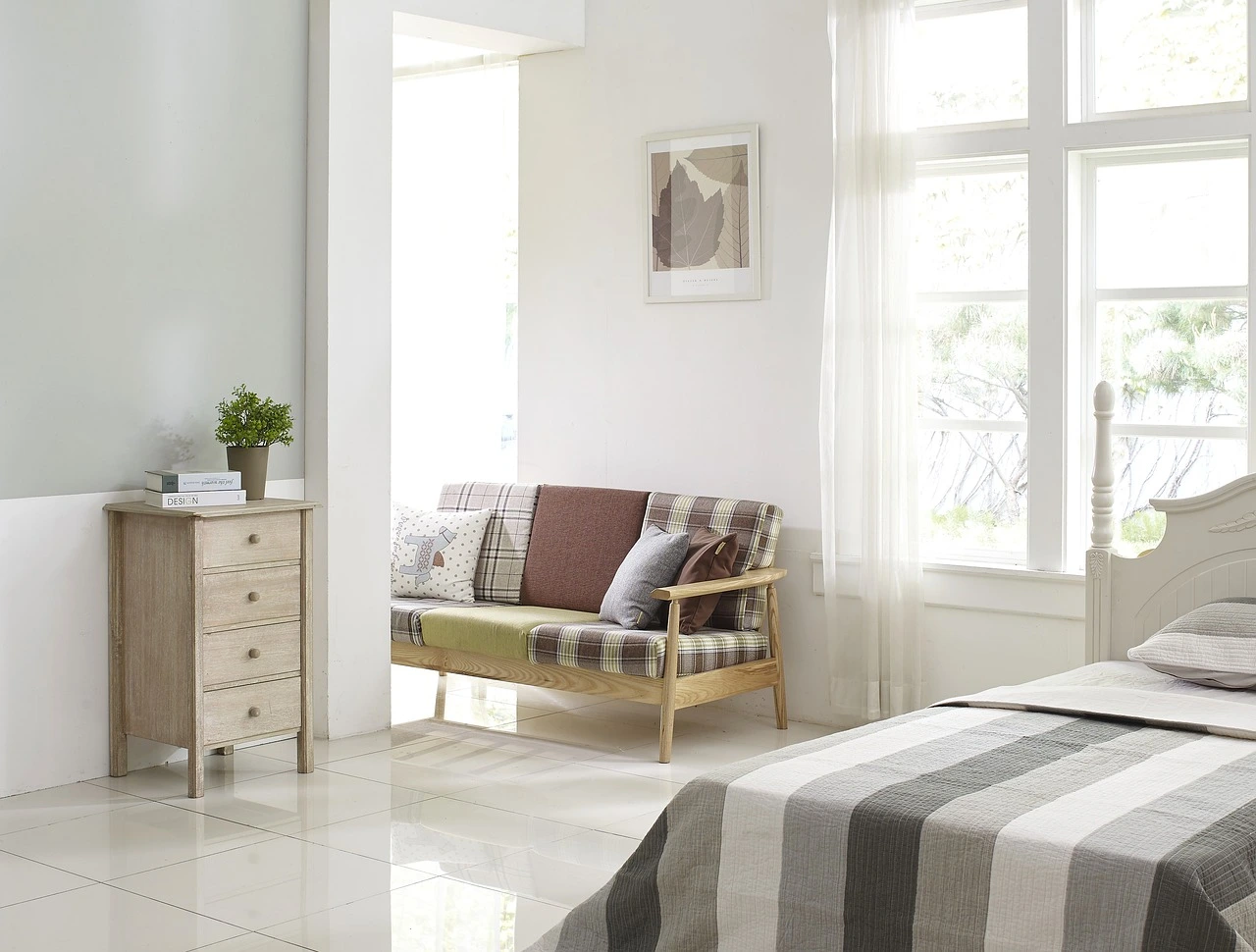Tile flooring is a popular choice for many homeowners who want to enhance the look and feel of their homes. Tile floors are durable, easy to maintain, and come in a variety of styles, colors, and patterns. However, choosing the right floor tile can be a daunting task, especially if you are not sure what factors to consider. In this post, we will share with you four tips to help you choose the right floor tile for your home.
Different Types of Floor Tiles
Before you start shopping for floor tiles, you need to know the different types of tiles available and their pros and cons. Here are some of the most common types of floor tiles and their characteristics:
- Ceramic tiles: These are made from a molded clay that is later fired at high temperatures. It is mostly designed with a glaze or coating that offers it protection, stain resistance, scratch resistance but most importantly water resistance bearing in mind their frequent use in the washrooms. Ceramic type of tiles is usually the cheapest type of tiles and most versatile and speedy in installation. However, they can also be chipped or cracked where they experience heavy impacts as well as in extreme changes of temperature.
- Porcelain tiles: Porcelain tiles are almost similar as ceramic tiles but are denser and harder as well, plus they are much stronger. They are less porous and more resistant to moisture and stains. Porcelain imitates natural stone, wood or metal since it has the ability to be polished easily. However, porcelain is usable for both indoor and outdoor, the most expensive tile is heavier than ceramic, and harder that every slab has to be cut.
- Stone tiles: Stone tiles can be made from natural materials as granite, marble, slate, or limestone. One wouldn’t have to worry about the building elements that can give a certain texture and look into one’s home because it only needs stone tiles to do it all. Stone tiles are also durable and can withstand the sort of traffic and pressures normally occurring. But they are porous as well, consequently some sealing and maintenance measures need to be carried out in a timely fashion to avoid any kind of stain accretion and damage. Plus, they cost more than other tile setups while installation and could require more effort to put them into place.
- Vinyl tiles: Vinyl tile refers to a synthetic material made from plastic or vinyl resin. These tiles are of flexible, lightweight and easy to install and also come cheaper than wood, stone, ceramic tile imitations. Vinyl tiles are resistant to water and stains, and very convenient for cleaning. However, with time they will begin fading and will get scratches and dents easily. In addition, they aren’t environmentally friendly because they may emit some harmful elements.
4 Tips to Choosing the Right Floor Tile
Now that you know the different types of floor tiles, here are four tips to help you choose the right one for your home:
- Consider the size of the room: The type of room will also influence the appearance and feel of the tiled floor. Normally, oversized tiles in a small room make it bigger while tiny tiles for large rooms provide more texture details. You also need to keep in mind the amount of cutting and wastage that comes with laying down the tiles. In ideal situations, you should select a size that complements the rooms dimensions best with minimal wastage.
- Choose the right color: The shade of the tile flooring can likewise affect the ambience and feeling of a room. Tiles in light colors will light up a dark or small room, whereas tiles in dark color will be cosy and warm for a large or bright room. In addition, the color of the walls, furniture, and accessories within the room must contribute to a cohesive color scheme. Contrasting or complementary colors can be used as accents or focal points in the room.
- Pick the right finish: Finish of a tile flooring refers to the surface texture and appearance of the tile. Finishes are also made for different types of tiles including glossy, matte, textured, and patterns. The finish determines how the tile will reflect light, how easy to clean it is, its slip resistance, and how well it goes with the decor in your home.
- Think about the maintenance: The last thing in selecting a suitable tile includes the number of hours and money you are ready to spend while keeping the tile clean and tidy. The resilience and resistance of various tile types to stains, scratches, and water vary. The tiles may need to be sealed, polished, or waxed for preservation purposes. The other thing is cleaning products and tools depending on the tile type. For instance, vinyl does not need acidic or abrasive cleaners, while natural stone cannot withstand such cleaners. Thus, soft cloths or sponge are enough for this tile type.
Maintaining and Cleaning Floor Tile
Once you have chosen and installed the right floor tile for your home, you need to take good care of it to ensure its longevity and beauty. Here are some tips on how to maintain and clean your floor tile:
- Sweep or vacuum regularly: Sweeping or vacuuming helps clear your floor tile of dust, dirt, or any other debris. This will ensure that they do not scratch the tile surface and grout lines. Ensure that you have put a doormat or rug by the main entry of your house so as to avoid dirt into your house.
- Mop with mild detergent: The next step in maintaining a clean tile floor is to sweep it with a mild cleanser and warm water at least once weekly, if not more often. Ensure you employ a soft mop or cloth wrung out fully so as not to leave excess water over the tile. Do not forget to rinse out the mop or cloth as well, in order to prevent spreading the dirt. It is advisable to steer clear of strong chemicals such as bleach, ammonia, or even vinegar since their application can lead to damaged tiles, or discolored, and grouts. Another thing you should note is to stay away from using steel wool, scouring pads, and bristles which could damage the tile’s surface.
- Dry with a soft cloth: Mop the floor and then dry with a soft cloth or towel to keep the tile clean. This will ensure that the tile does not develop a water spot, streaks or mold on its surface, nor in the grout. Besides, you should keep clean all the spills and stains as they are formed to avoid their hardness.
- Seal and polish as needed: Finally, seal and polish your tiled floor when necessary in order to protect its surface from daily tear and wear while making it look more attractive. You may need to re-seal your tile based on the type of sealer used once a year or even every few years, depending on which sealer you use, to keep moisture and dirt out. The porosity of the tile will determine whether you have to use a penetrating sealer, or a surface sealer. Some types of tiles like natural stones and ceramic might also require polishing to bring back their shine and luster. You should apply a suitable wax or polish for the tile type that you have.
Conclusion
Tile flooring is one sure way you can beautify your home. In addition, you have to pick the appropriate floor tiles based on your requirements, liking, and finances. You should also know how to keep clean and maintain your floor tile so that it last longer. Following the discussed ideas in this post will ensure that you get a perfect tile that suits your home. Feel free to call us for assistance with selecting and installing your floor tile. Our pleasure is to help in your floors issues.
FAQs
How do I choose the best tile?
One should make sure that he/she selects a suitable tile with consideration of the room’s purpose, one’s budget, and the image one wants to create in the room. Research about the various tiles, their lifespan, their maintenance needs, and compare it with your room’s requirements. The tile expert or an interior designer should also be consulted for further ideas on this.
Which type of tiles is best for floor?
The kind of tiles for your floor depends on the area it is to be used in. The choice of ceramic and porcelain tiles is motivated by its strength and large design options. Stone (e.g. marble or granite), which is much more expensive but perfect for a more luxurious look. There are pros and cons for each type, so you will have to compare them with your needs and the functionality of the room.
How do I choose floor tile size?
The best floor tile size for your room should be determined by the look you would like to create. Smaller tiles can create more visual interest in a huge hall while tiles of a larger size will help a tiny room look more spacious. You should also consult a tile expert, or use virtual visualisation tools by experimenting with different sizes of tiles to see what will fit best in your space.
Which colour floor tiles is best?
Selecting the best color of floor tiles depends upon your individual choice for the room’s aesthetics. Using light coloured tiles can make a room look airy and spacious while dark ones evoke a sense of cosiness, warmth. The tile color must also be considered with respect to the amount of the traffic as well as the ease of cleaning it. Light colors may easily show the dirtiness, therefore making dark shades preferable for this purpose.










